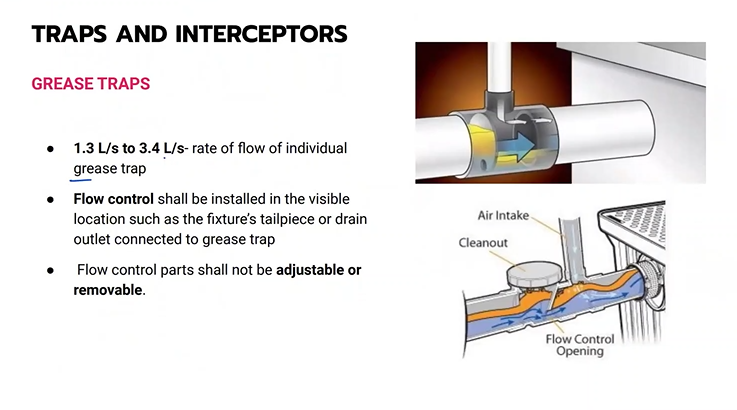PLUMBING CODE 3
1/57
There's no tags or description
Looks like no tags are added yet.
Name | Mastery | Learn | Test | Matching | Spaced |
|---|
No study sessions yet.
58 Terms
Backflow prevention for hot water over ___ shall be a listed type assembly designed to operate at temperature of ___ or higher without rendering any portion of the assembly inoperative.
a. 100°F
b. 110°F
c. 120°F
d. 140°F
b. 110°F
Non-absorbent materials shall be provided ___ in front of urinal.
a. 1.2 m
b. 0.3 m
c. 0.9 m
d. 0.6 m
d. 0.6 m
WSFU of wash sink, circular or multiple (each set of faucets)
a. 4
b. 3
c. 2
d. 1
c. 2
Minimum diameter of a building sewer
a. 150 mm
b. 200 mm
c. 250 mm
d. 300 mm
a. 150 mm
does not connect directly with the drainage system
Indirect waste pipe
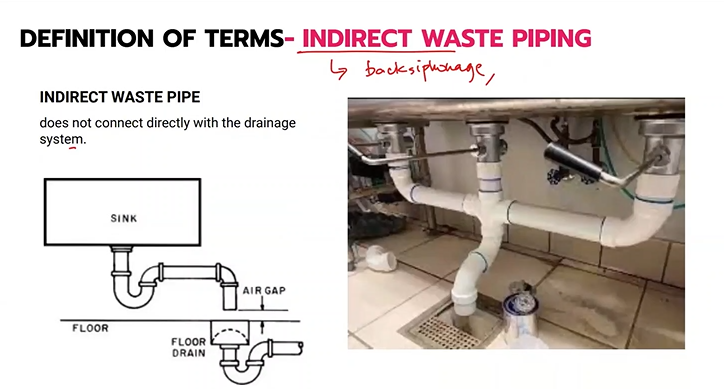
minimum airgap for drainage from the rim of the floor sink
25 mm
Water lifts, expansion tanks, cooling jackets, sprinkler systems, drip or overflow pans shall discharge to _____.
Air gap
Swimming pools shall discharge to ____
Indirect waste
Indirect waste pipes exceeding ___m and less than ___m shall be directly trapped, but not needed to be vented
1.5m and 4.6m
Indirect waste pipes less than ____ in length need not be larger in diameter than the drain outlet or tailpiece of the fixture, appliance or equipment served
4.6m
minimum dimension of indirect waste pipe
13mm
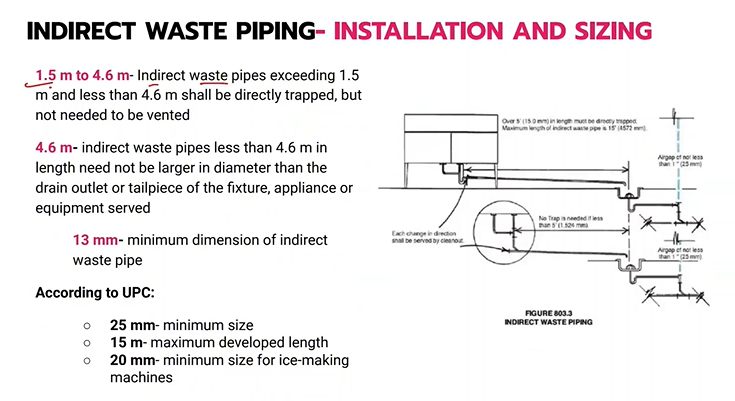
height of standpipe receptor above the trap of clotheswashers
0.45 m to 0.8 m
Height of trap for clotheswashers. No rap shall be below the floor
0.15 m to 0.45 m
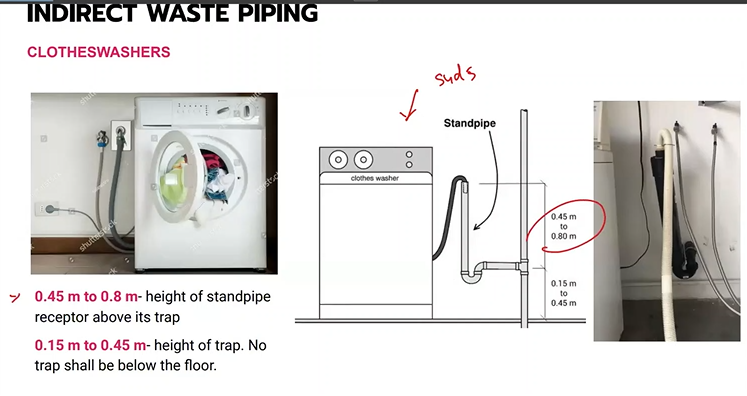
shall drain through airgap
Sterile equipment
May be installed with indirect wastes
Drinking Fountains
Necessary for the connection of dishwashing machine to a food waste disposer
Dishwasher airgap fitting
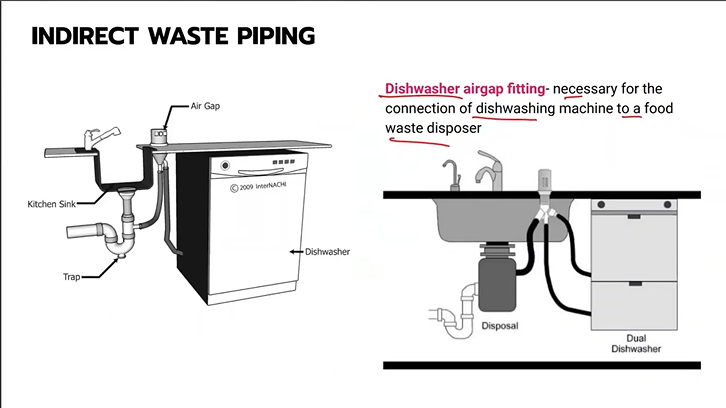
minimum inlet for waste line carrying refrigeration waste
32 mm
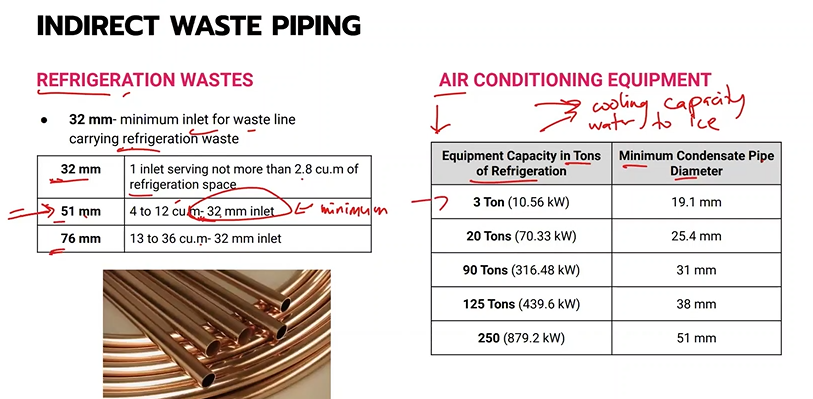
maximum temperature to discharge under pressure directly into drainage system
60°C
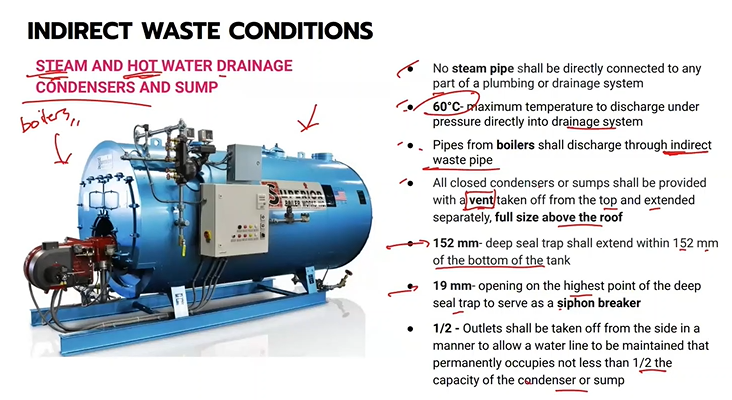
Pipes from boilers shall discharge through____
Indirect waste pipe
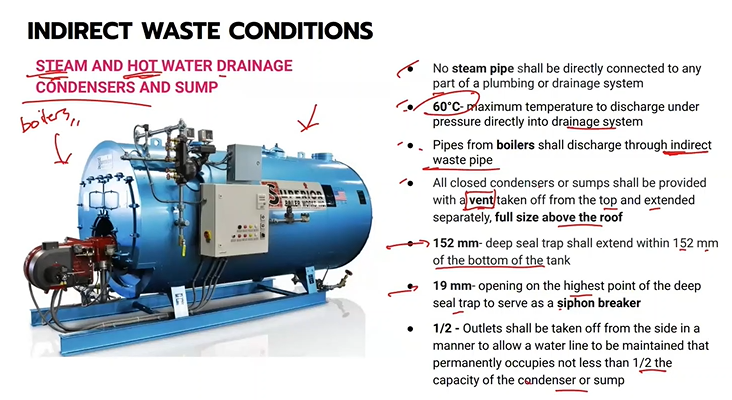
Deep seal trap shall extend within ___ of the bottom of the tank
152 mm
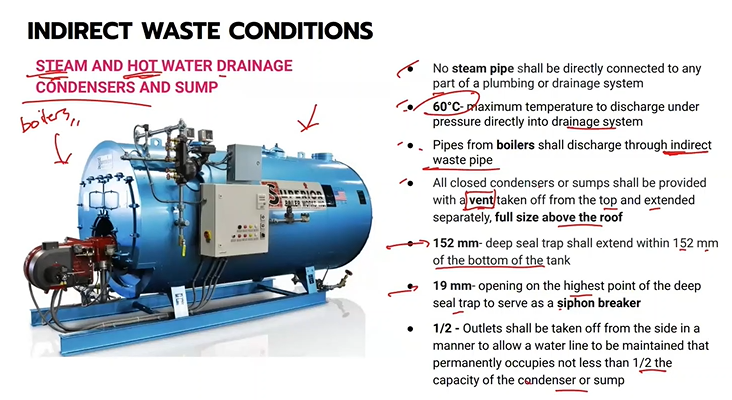
opening on the highest point of the deep seal trap to serve as a siphon breaker
19 mm
thickness of chemical-resistant glass-lined pipe, silicon iron pipe, lead pipe as vents serving acid or corrosive chemical
3.2 mm
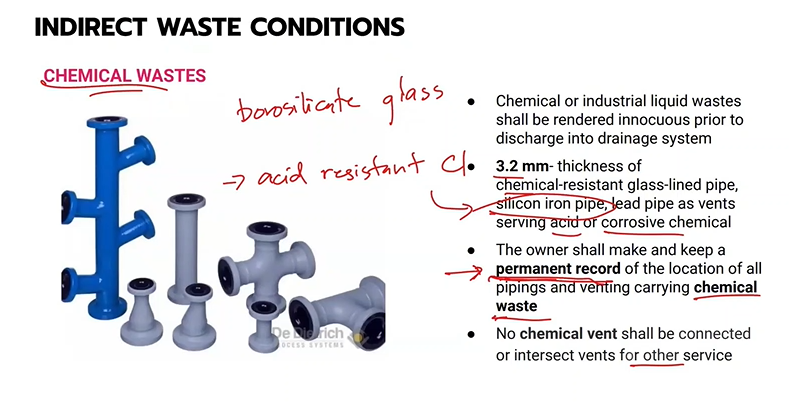
The owner shall make and keep a permanent record of the location of all pipings and venting carrying _____
Chemical Materials

Minimum size of indirect waste line carrying refrigeration waste
a. 32 mm
b. 38 mm
c. 51 mm
d. 76 mm
a. 32 mm
Condensers of metal shall not be less than ___ thick.
a. G.A. No. 17
b. G.A. No. 12
c. G.A. No. 16
d. G.A. No. 24
b. G.A. No. 12
a fitting that provides a liquid seal which prevents the backflow of foul air
Trap
Note: Memorize picture

that portion of a fixture drain between a trap and the vent
Trap arm
Note: memorize picture
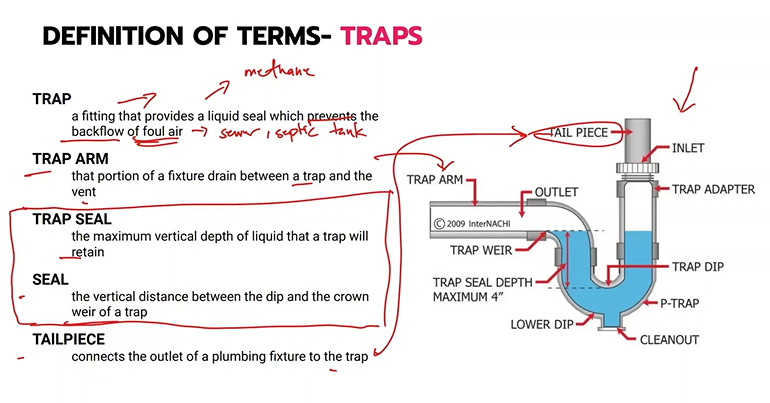
the maximum vertical depth of liquid that a trap will retain
Trap seal
Note: memorize picture
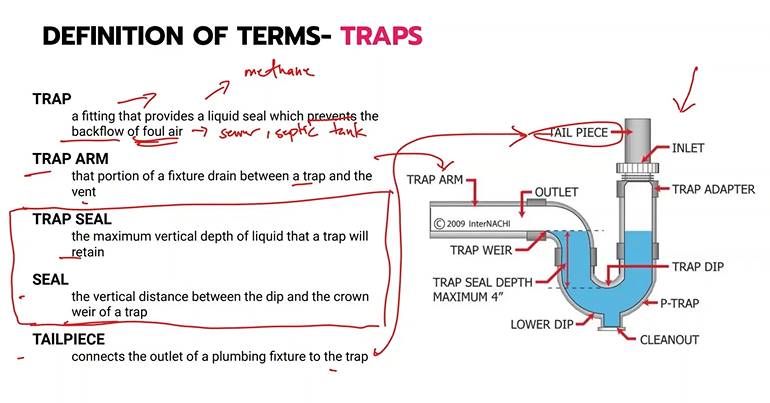
the vertical distance between the dip and the crown weir of a trap
seal
Note: memorize picture
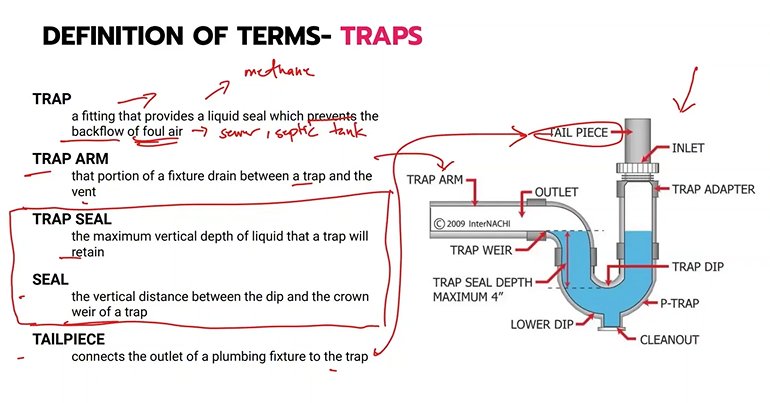
connects the outlet of a plumbing fixture to the trap
Tailpiece
Note: Memorize the picture
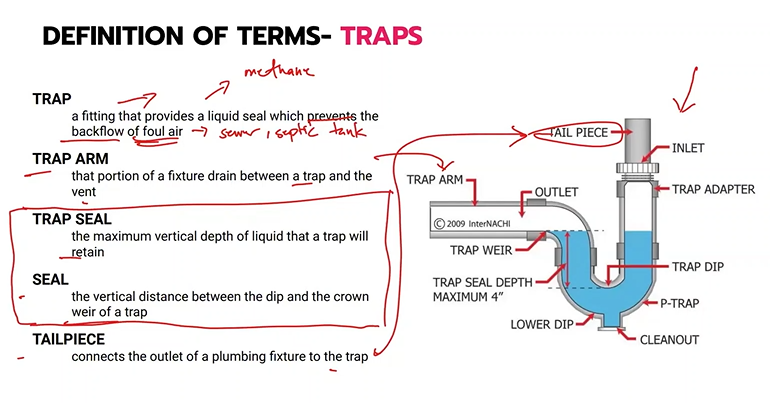
maximum length of tailpiece
0.6 m
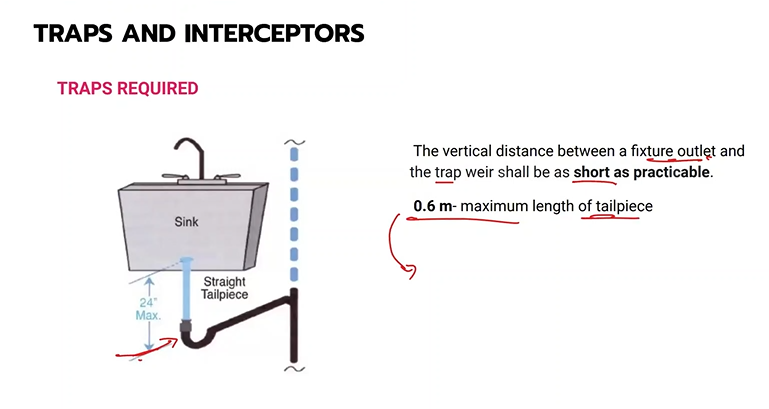
measured from the trap weir to the inner edge of the vent
Developed length
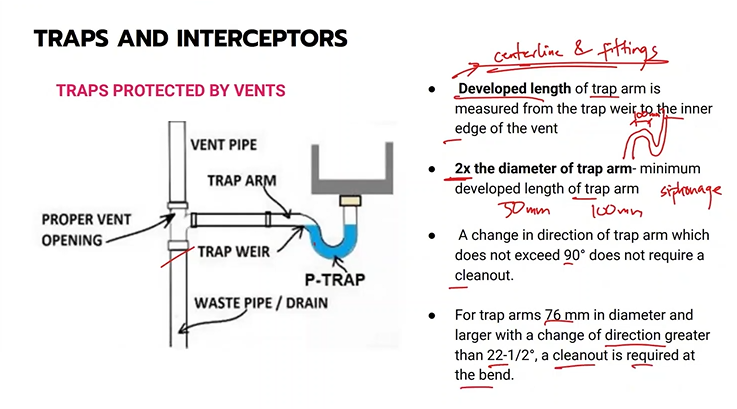
minimum developed length of trap arm
2x the diameter of trap arm
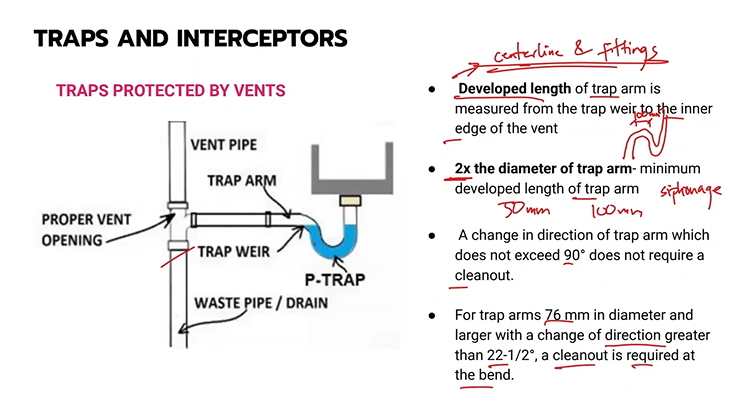
A change in direction of trap arm which does not exceed ___ does not require a cleanout
90°

For trap arms 76 mm in diameter and larger with a change of direction greater than ___, a cleanout is required at bend
22-1/2°
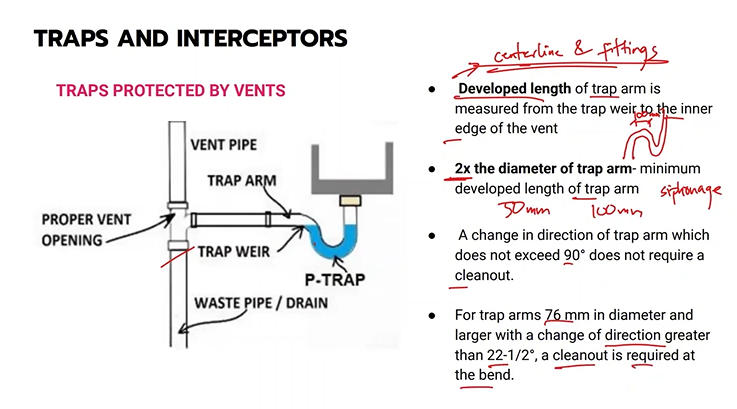
maximum developed length between trap of a water closet from top of closet ring to inner edge of vent
1.8 m
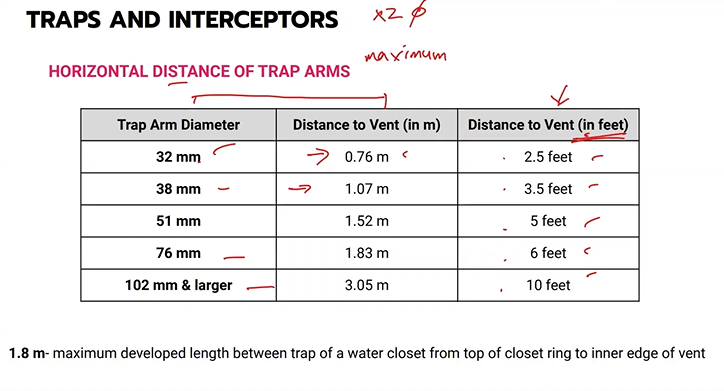
Memorize
thickness for exposed and readily accessible drawn brass tubing trap, excluding urine
Gauge 17 B&S or 1.1 mm

maximum number of slip joint on the outlet side of a trap
1

depth of water seal
51 mm to 102 mm (2” to 4”)
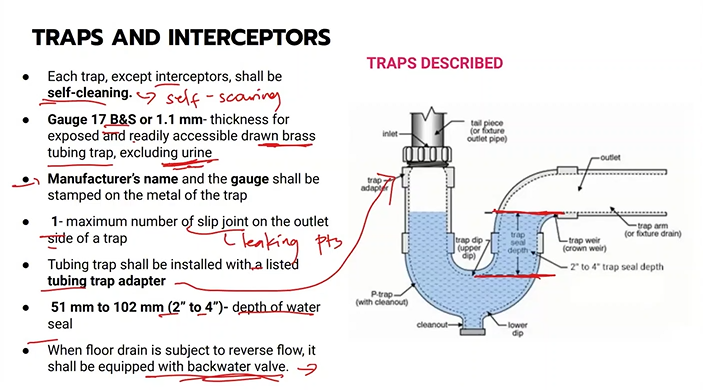
2 classifications of traps
Common Seal P-Trap
Deep Seal P-Trap
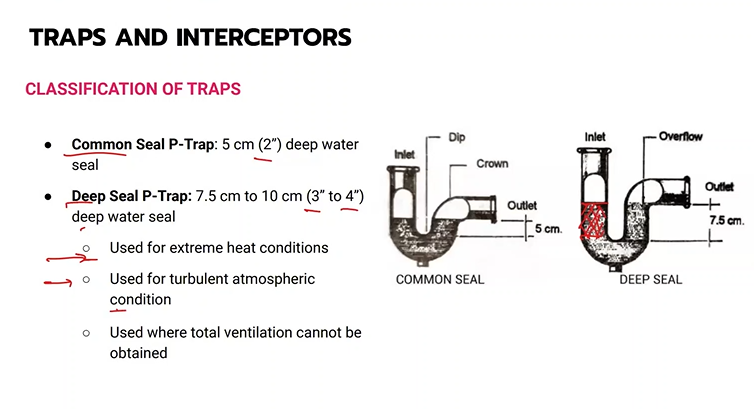
trap intended for fixtures set on the floor like bathtub, foot and sitz bath. Shall be installed with vent
Drum trap
Prohibited traps
“S” trap
Bell and crown vented traps
Double-trapping
Drum traps are allowed only when permitted
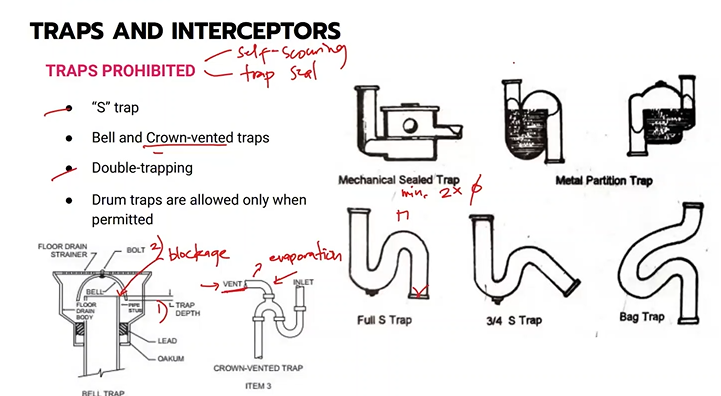
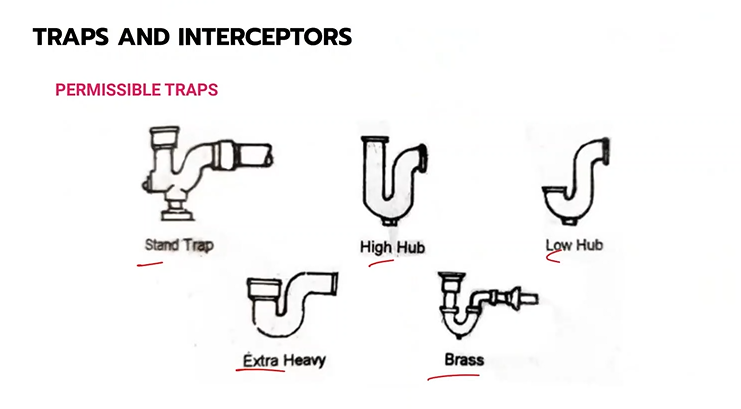
FAMILIARIZE
protection for drains or traps subject to infrequent use
Trap primer
term used when water seal escapes from the p-trap
Trap seal loss
result of minus pressure in the drainage system
Siphonage
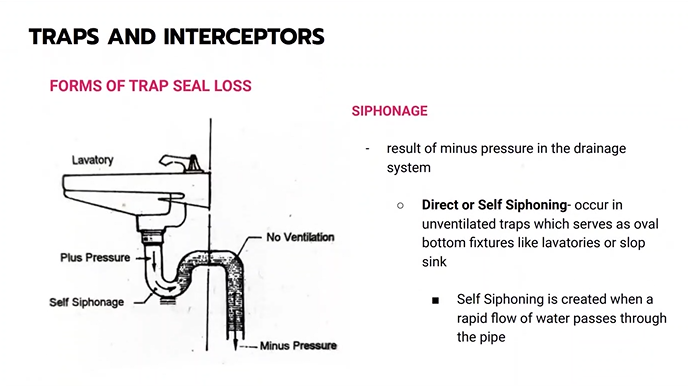

Indirect o momentum siphoning
Caused by plus pressure. When large amount of water flow drops downward rapidly forming a slug like, the air inside the pipe will be compressed downward
Backpressure
minor problem and less probable to drain water inside the trap. This happens on floor drains not regularly used to admit water.
Evaporation
wind velocity passing over the top of the soil pipe may affect the trap seal
wind effect
The kind of trap seal loss that seldom happens and is rarely experienced by homeowners. Draining of water seal caused by foreign objects like thread or string suspended and extended over the outlet arm of the trap
Capillary Action
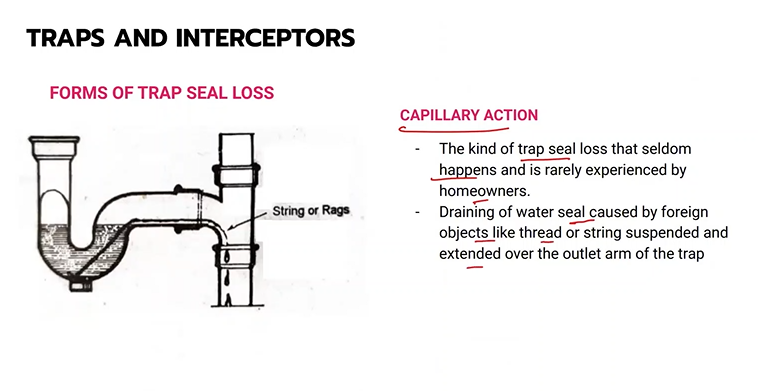
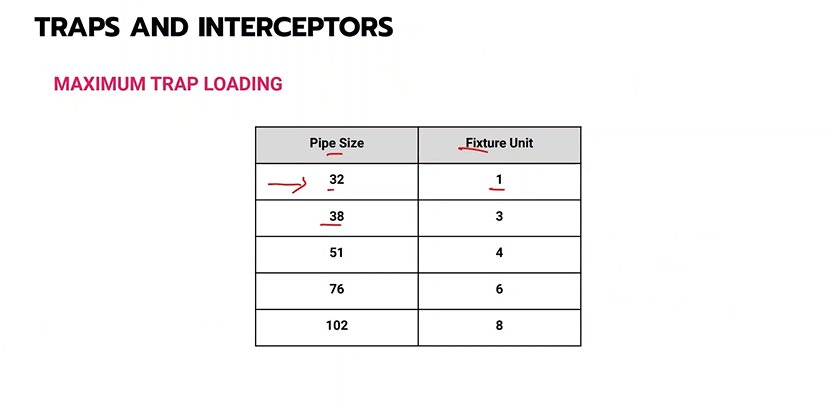
memorize
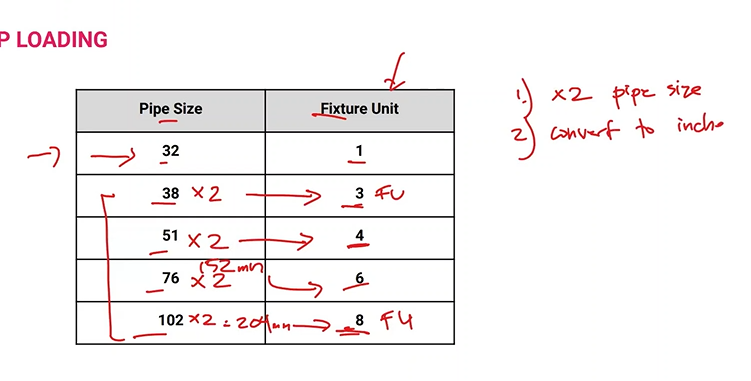
retains grease from 1 to 4 fixtures
Grease trap
Separates and retains deleterious, hazardous, or undesirable matters
Interceptor (Clarifier)
Atleast 3 cu. m. serving one or more fixtures and which is remotely located
Grease Interceptor
rate of flow of individual grease trap
1.3 L/s to 3.4 L/s
